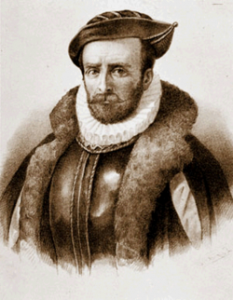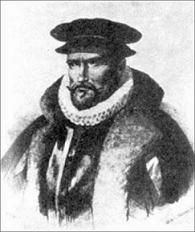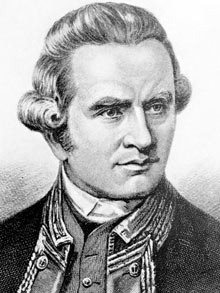1595 – Spaniard Álvaro de Mendaña de Neira is the first European to sight the islands.
1606 – Portuguese-Spaniard Pedro Fernández de Quirós makes the first recorded European landing in the islands when he sets foot on Rakahanga.
1773 – Captain James Cook explores the islands and names them the Hervey Islands. Fifty years later they are renamed the Cook Islands in his honour by Russian Admiral Adam Johann Ritter von Krusenstern
1813 – Captain John Dibbs and English missionary John Williams make the first official European sighting of Rarotonga.
1821 – English and Tahitian missionaries land in Aitutaki, become the first non-native settlers.
1823 – English missionary John Williams lands in Rarotonga, converting Makea Pori Ariki to christianity.
1858 – The Cook Islands become united as a state, the Kingdom of Rarotonga, (‘Matamuatanga Rarotonga’ – named after Rarotonga).
1862 – Peruvian slave traders, in 1862 and 1863, take a terrible toll on the islands of Penrhyn, Rakahanga and Pukapuka.
1888 – The Cook Islands are proclaimed a British protectorate and a single federal parliament is established.
1893 – The name “Kingdom of Rarotonga” is changed to the Cook Islands Federation.
1901 – The Cook Islands are annexed to New Zealand.
1946 – Legislative Council is established. For the first time since 1912, the territory has direct representation.
1965 – The Cook Islands becomes a self-governing territory in free association with New Zealand. Albert Henry, leader of the Cook Islands Party, is elected as the first prime minister.
1980 – The United States signs a treaty with the Cook Islands specifying the maritime border between the Cook Islands and American Samoa and also relinquishing its claim to the islands of Penrhyn, Pukapuka, Manihiki, and Rakahanga.
1985 – Rarotonga Treaty is opened for signing in the Cook Islands, creating a nuclear free zone in the South Pacific.
1991 – The Cook Islands signs a treaty of friendship and co-operation with France, covering economic development, trade and surveillance of the islands’ EEZ. The establishment of closer relations with France is widely regarded as an expression of the Cook Islands’ Government’s dissatisfaction with existing arrangements with New Zealand which is no longer in a position to defend the Cook Islands.
1995 – The French Government resumes its Programme of nuclear-weapons testing at Mururoa Atoll in September, 1995, upsetting the Cook Islands. New Prime Minister Geoffrey Henry is fiercely critical of the decision and dispatches a vaka (traditional voyaging canoe) with a crew of Cook Islands’ traditional warriors to protest near the test site. The tests are concluded in January 1996 and a moratorium is placed on future testing by the French government.





